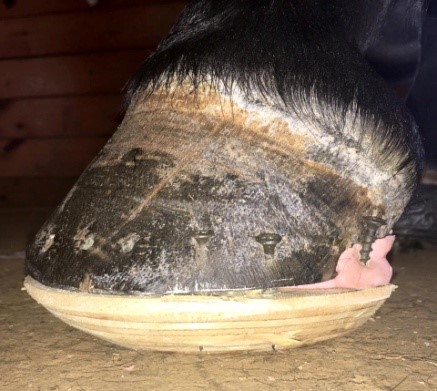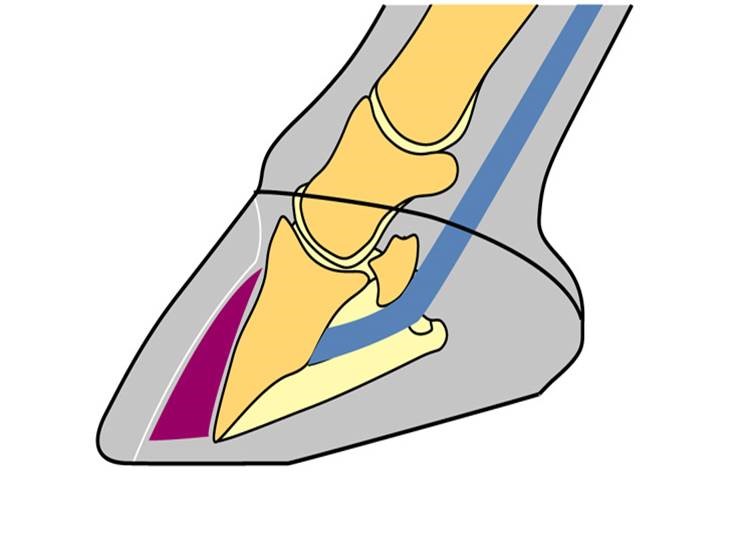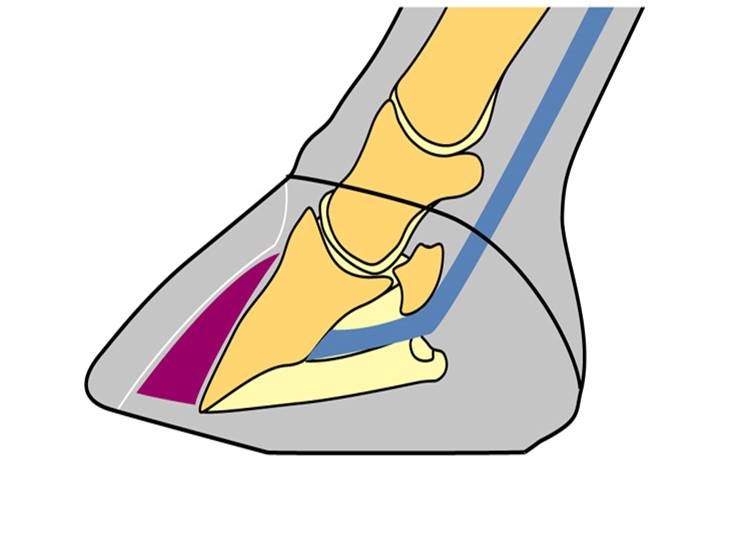I am a traditional farrier in all respects but one of the joys of farriery is there are many options. The wooden shoe (Figure 1) is one of these options and has been shown to be useful in treating acute / chronic laminitis, white line disease, distal phalanx and navicular fractures and just improving the integrity of the structures of the hoof capsule. In practicality, it is unrealistic to think that we can support a horse by placing some type of shoe or device on the bottom of the foot but we do have the ability to change the biomechanical forces on the foot. Biomechanically in the compromised or diseased foot, we can redistribute the weight of the horse, we can reposition or enhance breakover and we can provide heel elevation if necessary. These three biomechanical principles can be readily accomplished with the application of the wooden shoe. The wooden shoe is a transient device used to change the biomechanical forces on the foot, improve the integrity of the hoof capsule structures and promote growth at the coronet / sole. It The wooden shoe has to be applied with the appropriate trim (preferably using radiographic guidance) (Figure 2 & 3) and a thorough understanding of the biomechanical principles to be consistently successful. I seldom reset a pair of wooden shoes and if do reset them? never more than once. In 4-8 weeks I generally have the desired results and I go right back to traditional farriery remembering that there is a transition phase taking the horse out of the wooden shoes and back into the appropriate traditional shoes.
 |  |  |
| Figure 1 - note the biomechanical aspects of the shoe | Figure 2 ? black arrow is the is the center of rotation. Red arrow is the removable hoof at the heel | Figure 3 ? note the two planes on the solar surface of the foot |